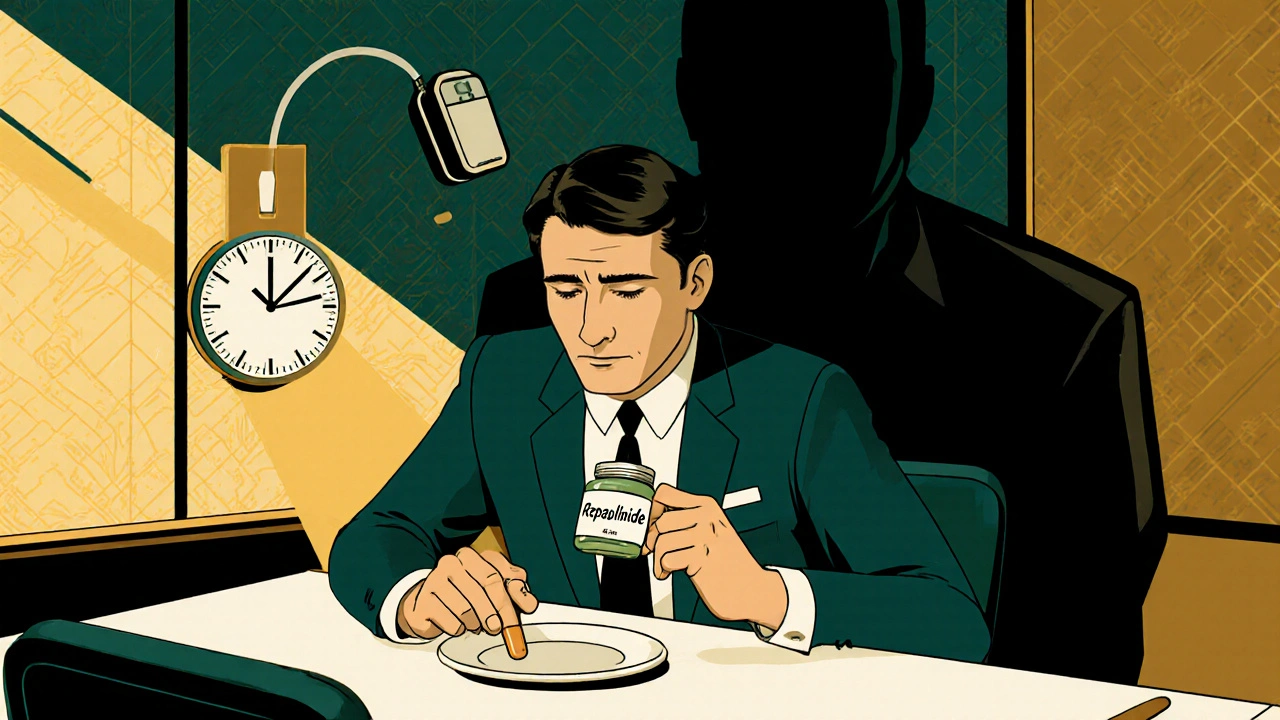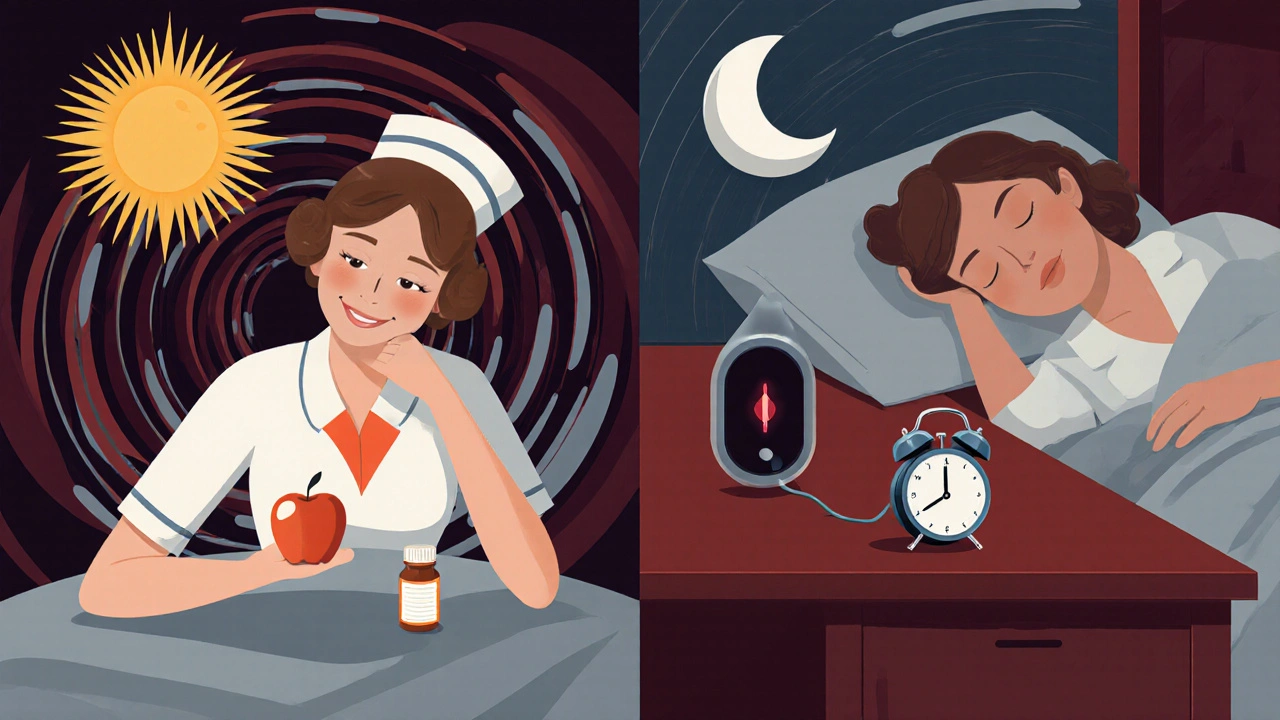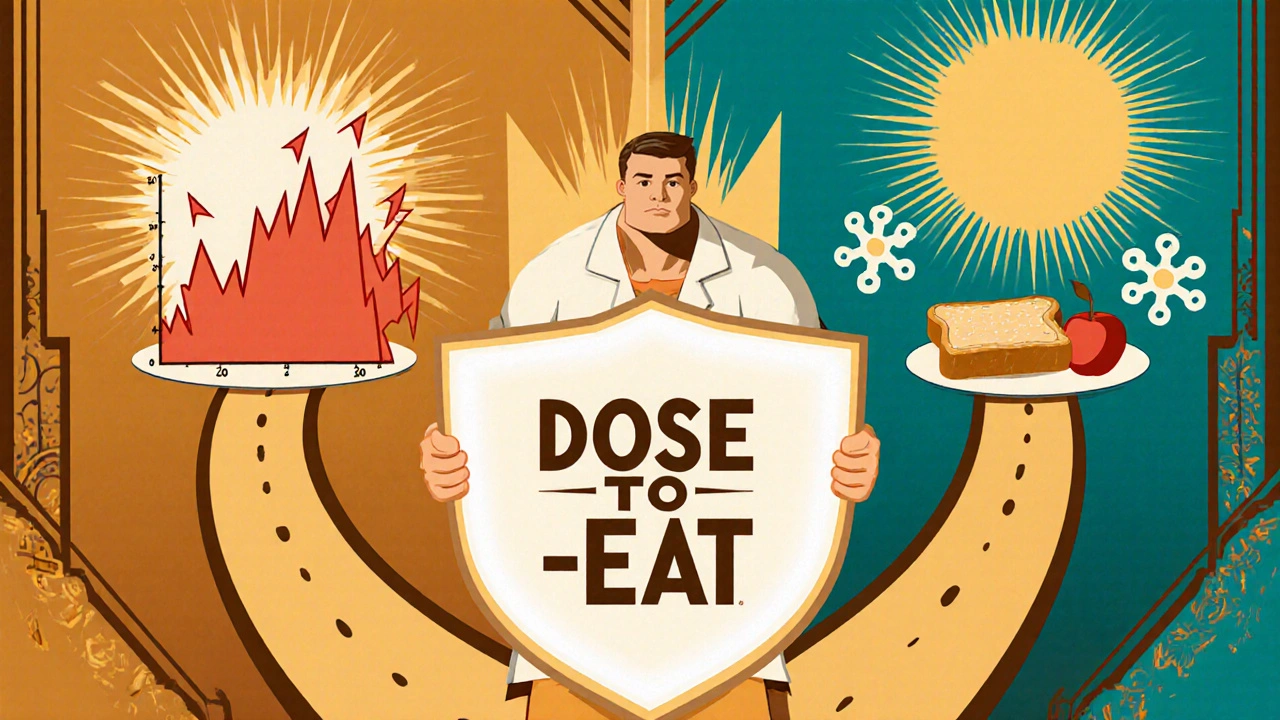Meglitinides and Hypoglycemia: Why Skipping Meals Is Dangerous with These Diabetes Drugs

Meglitinide Hypoglycemia Risk Calculator
Risk Assessment
Risk Assessment Results
When you have type 2 diabetes, managing your blood sugar isn’t just about taking pills-it’s about matching those pills to your meals. That’s where meglitinides come in. These drugs, like repaglinide and nateglinide, are designed for people who don’t eat at the same time every day. But here’s the catch: if you skip a meal after taking them, your blood sugar can crash-fast.
How Meglitinides Work (and Why They’re Risky)
Meglitinides are fast-acting insulin secretagogues. That means they tell your pancreas to release insulin quickly-within 15 to 30 minutes after you take them. Their job is to lower the spike in blood sugar that happens after you eat. Unlike older drugs like sulfonylureas, which keep working for hours or even a full day, meglitinides wear off in just 2 to 4 hours. That’s why they’re useful for people with unpredictable schedules-like shift workers, older adults with memory issues, or anyone who doesn’t always eat on time.
But that speed is also their weakness. If you take the pill and then don’t eat, your body gets a surge of insulin with no food to use it. Blood sugar can drop below 70 mg/dL within 90 minutes. That’s hypoglycemia. And it’s not just uncomfortable-it can be dangerous. Dizziness, sweating, confusion, even seizures or loss of consciousness can happen.
Studies show that skipping just one meal after taking a meglitinide increases your risk of hypoglycemia by 3.7 times. For people over 65 or those with kidney problems, the risk is even higher. In fact, patients with advanced chronic kidney disease have a 2.4-fold greater chance of severe low blood sugar when on these drugs compared to those not taking them.
Repaglinide vs. Nateglinide: Small Differences, Big Consequences
There are two main meglitinides: repaglinide and nateglinide. They work similarly, but not identically. Nateglinide starts working in about a minute, while repaglinide takes 3 to 5 minutes. Both peak in your bloodstream within an hour. But repaglinide is slightly more powerful at lowering HbA1c-by about 0.6% more than nateglinide in clinical trials. That sounds small, but it matters for long-term health.
Here’s the trade-off: repaglinide also causes about 28% more episodes of hypoglycemia than nateglinide. Why? Because it triggers a stronger insulin response. If your meals are irregular, this makes repaglinide riskier unless you’re extremely strict about timing.
Both drugs are cleared mainly by the liver, not the kidneys. That’s why they’re often preferred over sulfonylureas in people with kidney disease. But that doesn’t make them safe. The National Kidney Foundation still recommends cutting the repaglinide dose in half if your kidney function is very low (eGFR under 30). Even then, skipping meals can still trigger low blood sugar.

What Happens When You Skip a Meal?
Let’s say you take your pill at 8 a.m., thinking you’ll eat breakfast at 8:30. But you get distracted, run late, and don’t eat until 10 a.m. By 9:30, the drug has already pushed your insulin levels high. Your body starts using up glucose-but there’s no food coming in. Blood sugar plummets.
Real-world data shows that 41% of all hypoglycemia events in meglitinide users happen between 2 and 4 hours after dosing. That’s the exact window when the drug is strongest and meals are most likely to be delayed. It’s not a coincidence. It’s the design flaw built into the medicine.
Retrospective studies found that skipping one meal increases hypoglycemia risk by 63%. And if you’re taking other diabetes drugs-like insulin or sulfonylureas-the risk multiplies. One study showed that combining meglitinides with insulin raised hypoglycemia risk with statistical significance (p=0.018). That means it’s not just possible-it’s likely.
Who Should Use Meglitinides-and Who Should Avoid Them
Meglitinides aren’t first-line treatment. Metformin still is. But for people who can’t stick to a routine, meglitinides offer flexibility that other drugs don’t. They’re most helpful for:
- People with irregular work hours (nurses, truck drivers, night shift workers)
- Older adults who forget meals or have trouble preparing food
- Those who had bad reactions to sulfonylureas (like constant low blood sugar)
- Patients with moderate kidney disease who can’t use some other diabetes drugs
But they’re not for everyone. Avoid them if you:
- Often skip meals or eat at wildly different times
- Have trouble remembering to take pills with food
- Are on multiple insulin-stimulating drugs
- Have a history of severe hypoglycemia
For many people, newer drugs like GLP-1 agonists (semaglutide, liraglutide) are safer because they don’t cause low blood sugar unless combined with insulin. But they’re more expensive and require injections. Meglitinides remain a practical, oral option-for the right person.

How to Use Meglitinides Safely
If you’re on one of these drugs, your safety depends on one thing: consistency. Not perfection. But consistency.
Here’s what works:
- Dose only when you’re about to eat. Don’t take it “just in case.” Take it 15 minutes before you start eating. If you’re not sure you’ll eat, skip the dose.
- Don’t skip meals. Even if you’re not hungry, eat something small-like a piece of fruit, a handful of nuts, or a slice of toast. No food = no pill.
- Carry fast-acting sugar. Always have glucose tablets, juice, or candy on hand. If you feel shaky or dizzy, act fast.
- Use reminders. Smartphone apps that alert you to eat after taking your pill can reduce hypoglycemia by nearly 40%. Set two alarms: one for the pill, one for the meal.
- Consider continuous glucose monitoring (CGM). If you’ve had a low blood sugar episode before, CGM can catch drops before you feel them. Studies show it cuts hypoglycemia events by 57% in meglitinide users with erratic eating.
Some doctors now use a “dose-to-eat” strategy: no meal, no pill. It’s simple, effective, and prevents the most common cause of danger.
The Future: Can We Fix This?
Researchers are trying. A new extended-release version of repaglinide is in Phase II trials. Early results show it reduces hypoglycemia by 28% in people with unpredictable meals. It’s not a magic fix-but it’s progress.
Drug labels now carry stronger warnings from the FDA. Patient handouts from hospitals like Memorial Sloan Kettering clearly state: “Take this medicine 15 minutes before you eat. Waiting too long to eat after you take the medicine raises the risk of hypoglycemia.”
But no label, no app, no new pill can replace good habits. The science is clear: meglitinides are powerful tools-but only when used with discipline. For people who can’t manage that, safer alternatives exist. For those who can, these drugs offer real freedom. Just don’t forget to eat.
